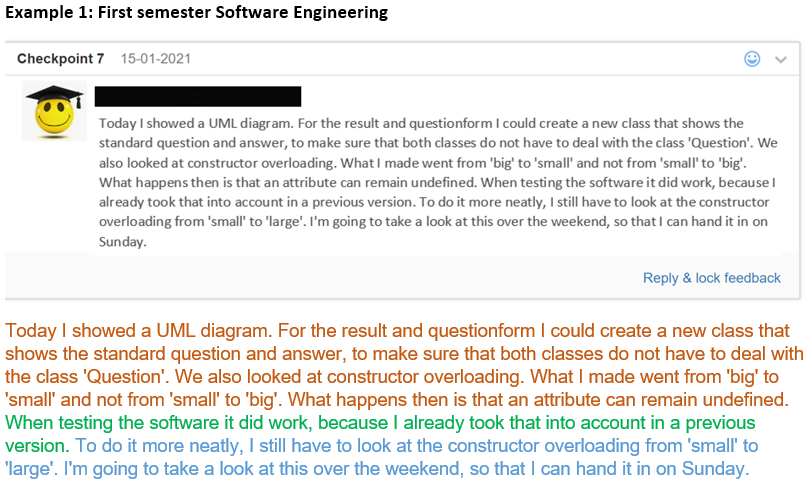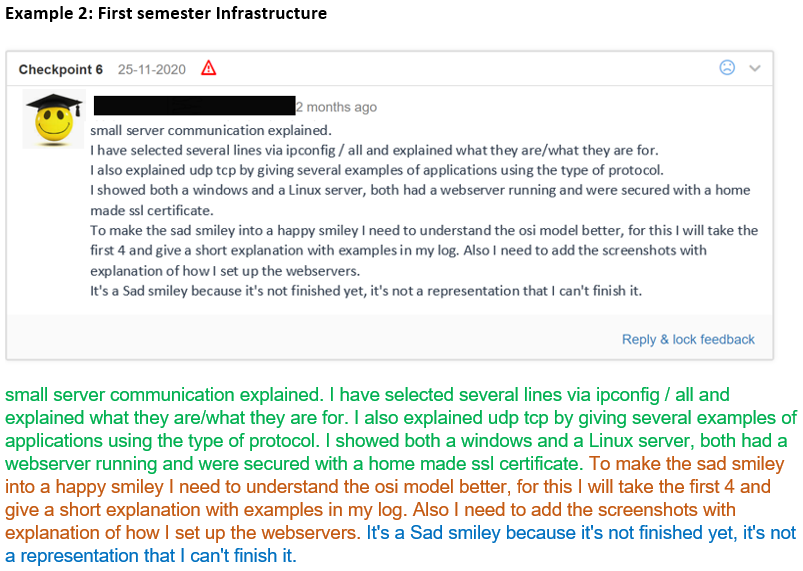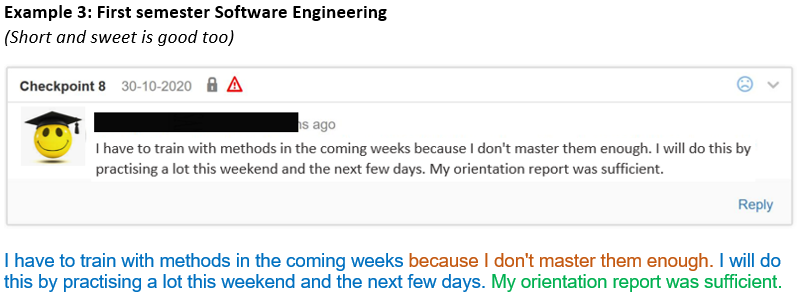Table of Contents
FeedPulse
Summary
Within Fontys ICT, students are provided with development-oriented feedback on several occasions. FeedPulse (LTI application integrated in Canvas) is used within many educational units to support the feedback process. Unambiguous use of FeedPulse within the institute is of great importance to the student.
Introduction
At Fontys ICT, students are provided with development-oriented feedback on overall performance on several occasions. The different measuring moments are learning moments for the student (and lecturer) and can provide valuable information about the development (on the various learning outcomes). Students process the feedback they receive in dialogue in FeedPulse at a “checkpoint”. They are thereby activated and co-responsible for their own development.
Because the feedback from multiple measurement moments can be recorded in the tool, an overview of the development of students over time is created. This makes it easy for the lecturer to monitor students' learning process and students gain more insight into their own development. All feedback given, products delivered and reviews can ultimately form the basis for the integral semester assessment. This one isn't really a surprise to the student anymore.
Features
Checkpoint
A checkpoint stands for a measuring/feedback moment. The lecturer creates a checkpoint for a student or group of students when the feedback is given. The student writes down the received feedback himself at the checkpoint.
- How do I do it now? (Feedback);
- Where am I working towards (Feedup);
- How to proceed now? (Feedforward).
Smiley-rating
At a checkpoint, the lecturer gives a smiley-rating of the student's overall performance (in relation to the learning outcomes).
Figure 1
Guideline for smiley-rating at checkpoints by the lecturer as an evaluation of student performance.:
You show something special and are good at demonstrating the learning outcomes (above expectation).
You have shown something good and are well on your way to demonstrating the learning outcomes.
You didn't show anything or anything that wasn't good enough. You really have to go the extra mile to be able to demonstrate the learning outcome.
Optional self-rating
In order to involve the student even better in the feedback process and to let him think about his own development, the student can (optionally) give himself a rating at a checkpoint. Any differences in self-rating and lecturer-rating can be valuable input for the feedback interview.
Figure 2
Optional self-rating at checkpoints in case of evaluation by the student.
Peers
Peers can be turned on through the settings menu. An extra tab will then appear. The student can give feedback to fellow students from the group several times over time.
Way of working with FeedPulse within Fontys ICT
For students it is nice if all lecturers who use FeedPulse do so in the same way as much as possible, so that students get used to an unambiguous working method. The use of FeedPulse within Fontys ICT is as described in the steps below. This process also applies to the use of FeedPulse in project groups. The lecturer regularly gives oral feedback, feed-up and feed-forward to the project group. One student of the group fills in the feedback, the other group members can still respond if necessary.
- The lecturer creates a checkpoint;
- During the feedback moment, the lecturer sits next to the student and gives oral feedback, feed-up and feed-forward on the overall performance of the learning outcomes. You can also use the help questions for this;
- The student records the feedback, feed-up and feed-forward in FeedPulse during the interview. Notes may also be made and elaborated on later;
- Immediately after the interview, the lecturer gives a smiley-rating on the overall performance of the student at that moment.
- The next feedback moment (e.g. one or two weeks later) is looked back at the previous feedback moment (previous checkpoint) with the student. How is the student's performance now? And what was done with the feedback, feed-up and feed-forward from last time?;
- The lecturer creates a new checkpoint and has the student type in the feedback, feed-up, and feed-forward at this new checkpoint.
Practical focal points for the lecturer:
- When you give a negative smiley, do check what the student has written down and whether he/she understands why it is still insufficient. If the student is not present or communicates inadequately, you can give a negative smiley without the student having noted any feedback.
- The smiley-rating indicates how you value the overall performance of the student at that moment. There is no need to correct and/or supplement the student's written feedback at each checkpoint. You can do this if it helps to better secure the feedback in FeedPulse.
- Answering a short question does not require FeedPulse to be filled.






